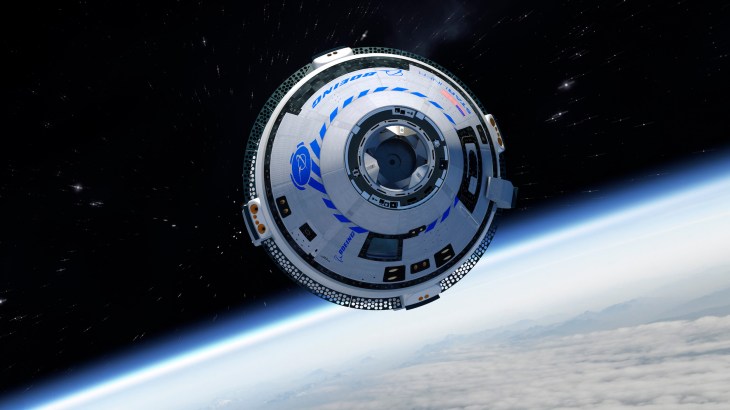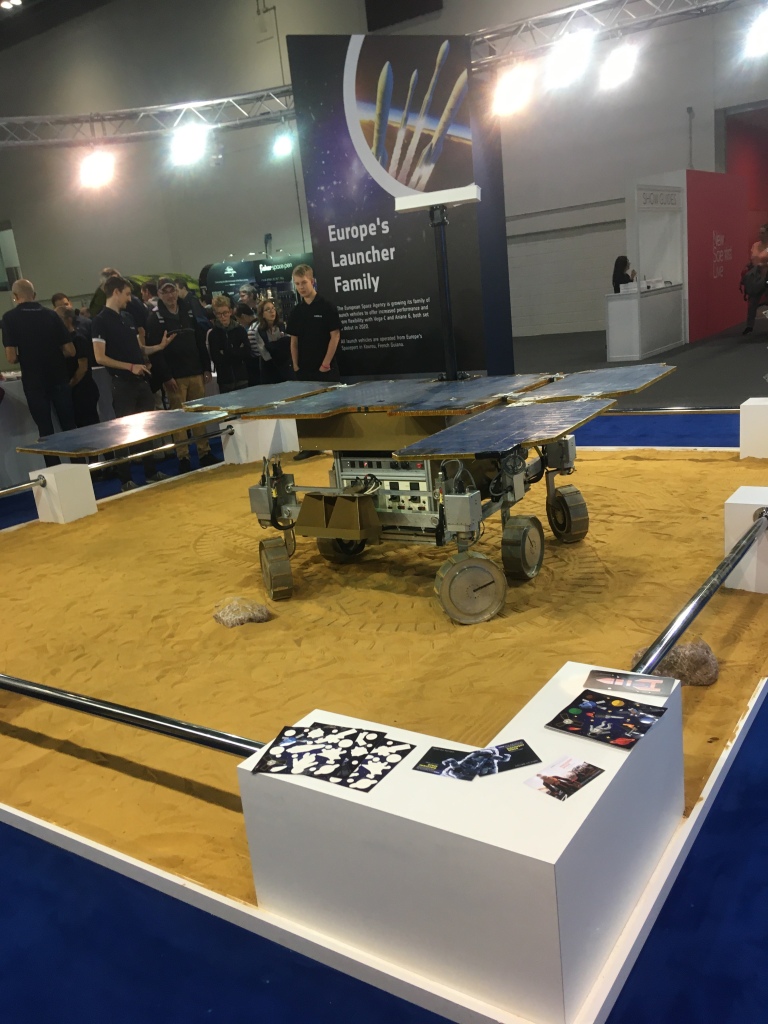Its the beginning of a new year (just about, this is going up later than I planned!), so many people are thinking about what they should leave behind in 2019… but what will be leaving the earth this year? As well as the 50,000 tonnes of matter that the earth will lose over the year, mainly from light gases like Hydrogen and Helium being lost from the atmosphere, it is also an exciting, and perhaps worrying, year for spaceflight and rocket launches!
According to this Wikipedia article, there could be up to 300 launches this year! However, due to the fickleness of launches, any one of these could be scrapped or delayed due to weather, lack of funding, failure to meet deadlines, rocket failure, or any number of other reasons! (I should know- I went to Florida a few years ago and hoped to see the Parker Solar Probe launch, but it kept getting pushed back!)

Here are a few interesting ones you should look out for!
SpaceX in-flight abort test
This actually launched last week, and was a success! This is a super important step, as it was the last hurdle SpaceX had to complete before being allowed to launch real astronauts! This means that they are set to become the first commercial organisation to launch a crewed mission to the ISS, and will be the first crewed launch from American soil since the retirement of the space shuttle in 2011. Not only was the mission a success, it also looked really cool: the abort sequence meant was caused by the rocket cutting its thrust (upward power from the engines), so after the Dragon Capsule escaped, the rocket is subjected to extreme forces, which caused it to explode in a ball of ‘dragon fire’! You can watch the Livestream here.

Solar Orbiter launch (Feb)
The new mission from ESA plans to image the sun’s poles from up close for the first time. After its launch from Cape Canaveral, it will enter a heliocentric orbit (orbiting the sun), and use Venus as a slingshot to slowly incline its orbit until it can view the sun’s polar regions. The aim of the mission is to find out more about the sun’s magnetic field and solar wind, which has important implications for life on earth particularly as technology becomes an increasingly important part of our lives! The payload, which weighs about the same as a medium-sized car (1,800 kg), will carry 10 different instruments to detect the sun’s magnetic field, solar wind and energetic particles, as well as cameras/imaging software for a range of wavelengths! It’s first pass close to the sun will be in 2022, and after that, its orbit will become more inclined, and closer to the sun, with every flyby!
Expedition 63 launch (May)
May will see 3 more astronauts venture into space to board the ISS. This presents new challenges for possible spacewalks (EVAs), as there will only be one NASA astronaut, and 2 Roscosmos cosmonauts on board at times, so the Russian astronauts have also been trained to fix the US parts of the station in an American spacesuit. However, this may not be the first crewed launch of the year, with the first crewed SpaceX launch set for February. But I can’t find much more information about this, other than the fact it will occur. If anyone knows more, please let me know!

Starliner 2nd test (May?)
Before the recent failure of the Boeing starliner to rendezvous with the ISS it had been planned for the first crewed launch to lift off in May, but it is possible that another unmanned launch will be scheduled. Despite being a ‘failure’, it did land safely where expected, so would still be considered safe to be launched with astronauts, it is simply a case of how much money they plan to spend on this.

Mars 2020 rover (August)
This is one of the most exciting launches of the year! NASA’s new Mars rover will launch over the summer, and follow in the footsteps of the Mars Science Laboratory- aka the Curiosity Rover! It will undergo a very similar launch, entry and landing to Curiosity, which launched 9 years ago (2011), and the rovers both look very similar! Using similar tech reduces the risk associated with interplanetary missions, but it has been updated in order to land more precisely, as well as being adaptable: Although much of the hardware is the same, it carries new and even more exciting experiments! It has 4 objectives:
- Look for Past Habitability- could microbes have existed?
- Seeking Biosignatures- did past life exist?
- Caching Samples- collecting rock samples and storing them for future missions to collect
- Preparing for Humans- testing oxygen production from CO2 in the Martian atmosphere

It will launch in July/August, from Florida on a ULA atlas rocket, and is due to land on Mars’ Jezero Crater in early 2021.
Until the 26th of January, you can have a say in what this rover will be called! Check it out here.
Exomars Rover: Rosalind Franklin- July
The other mission heading to Mars this year is the new Exomars rover: Rosalind Franklin, from ESA and Roscosmos. The rover is very similar to NASA’s Mars 2020, with a similar primary objective: search for past and present life from biosignatures. What makes it different is:
- It can drill down and collect samples from 2m below the surface, which would be more protected from the intense radiation, meaning that life, or signs of past life, is more likely to have survived. This can then be analysed using ~5 of the rover’s instruments, which can report on biosignatures and composition.
- It will land in Oxia Planum- a lowland area close to the boundary where many channels would have emptied into this area, which would have been covered in water. Like Jezero, this makes it a prime place for life to have existed, and data from orbiters have suggested that it is also rich in clay deposits, which preserve fossils well. The difference is that it is not part of a crater, but a much larger area. Therefore it was probably part of a larger body of water, not just a lake. In addition, the impact of a crater can change the composition of rocks, but the rocks in Oxia Planum appear to be more representative of Mars as a whole. This landing site was also chosen for practical reasons: being a lowland area means that there is more atmosphere above it to slow the landing of the rover!

This rover is the second of the two Exomars missions, as it follows the Trace Gas Orbiter which launched in 2016, and will be the main communication channel between earth and the rover. I was lucky enough to see a lifesize replica of the rover at New Scientist Live!
ESA- Rosalind Franklin Exomars: Oxia Planum
NASA- Mars 2020: Jezero Crater
In other Mars News, UAE and China also plan to launch missions to the Red Planet this summer!
Artemis- November
This year also starts the beginning of Artemis- NASA’s new mission to return astronaut’s to the moon. Artemis 1, an uncrewed Orion module that will orbit the moon, for 6 days, out of its 25-day journey. This mission is super important, as it will show that both the new Space Launch System and Orion Module are safe, and certified for spaceflight! If this goes to plan, then Artemis 2, the first crewed mission that will begin to build the Lunar gateway, will go ahead as planned, in 2022! It’s safe to say that this is one of the most exciting missions of the year, simply because of its symbolism, and should launch in November!
The Orion Module was made in conjunction with ESA
Chang’e 5 moon sample return- December
Part of the third phase of the Chinese Lunar Exploration Program, this mission plans to land on the near side of the moon, and collect up to 2kg of lunar rock- the regolith. This could come from up to 2m below the surface, before being returned to earth: the first return since 1976. It will also be able to do some analysis in situ and take pictures of the surroundings. At the moment, it’s planned to launch in December 2020 and land on the near side of the moon, in the largest of the moon’s mare (highland regions).
Commercial Spaceflight
2019 saw the first test passenger for Virgin Galactic reach (sub)orbit, and return safely! This means that it will probably start to launch the ‘first’ space tourists (after the 7 who have visited the ISS) this year! It is super exciting as it signals the beginning of ‘accessible’ spaceflight- even if the tickets cost ¼ of a million dollars… baby steps I guess! The other major commercial spaceflight company is Blue Origin, and although they had 3 launches last year, reaching a total of 12, they still have a couple more tests to run before they start taking tourists, so if that does start this year, it probably won’t be until the end. Virgin Galactic’s sister company, Virgin Orbit, also plans to begin orbital satellite launches this year: slightly behind the likes of SpaceX, but it has completely different technology, being launched from the air. Check out my post on it here.

Blue Origin Take Off 
Virgin galactic in flight
Satellite Constellations
Forget the Year of the Rat, 2020 looks to be the year of the satellite constellation, with SpaceX planning at least launches of its Starlink satellites, each with 60 satellites, to add to the 2 batches launched in 2019. The most recent was on the 7th of January, and the next will be on the 24th. One Web also beginning to launch satellites this year. SpaceX has permission to launch up to 12,000 satellites, although it is unlikely they will launch them all, and One Web has an initial target of ~600. Already concerns have been raised by astronomers of not only the visual disturbance of satellite tracks but also the interference with radio telescopes, as the satellites, at least for Starlink, have radio-based antennas. This is a big problem, but not very well regulated, due to how new the technology is! Governments will have to act fast, as the affects are already being seen: just days after the first launch in May 2019, a ‘pearl-like string’ of the satellites could be seen. I also was lucky (?) enough to spot some of them over the Christmas period, and it was a really eerie thing to watch!
Over time, the satellites will move higher into position, and realign so that eager-eyed (very) amateur astronomers won’t be able to see them so easily, but that doesn’t mean they aren’t there. They also pose another threat: collisions between satellites and various space junk can be incredibly dangerous (as seen in the 2013 film gravity), and with more beng launched, the threat is increased. There has already been a fairly close call, in which ESA had to move one of its satellites, for fear of it crashing with one of the initial 60 Starlink satellites. I think this is an interesting area of technology, and its purpose (to provide global internet access) is indeed useful, so I look forward to the developments!
So, what are you most looking forward to in the year in spaceflight?
Have I missed any cool missions I should know about? Let me know in the comments!

Want more spaceflight news and thoughts? Check out my spaceflight category!




